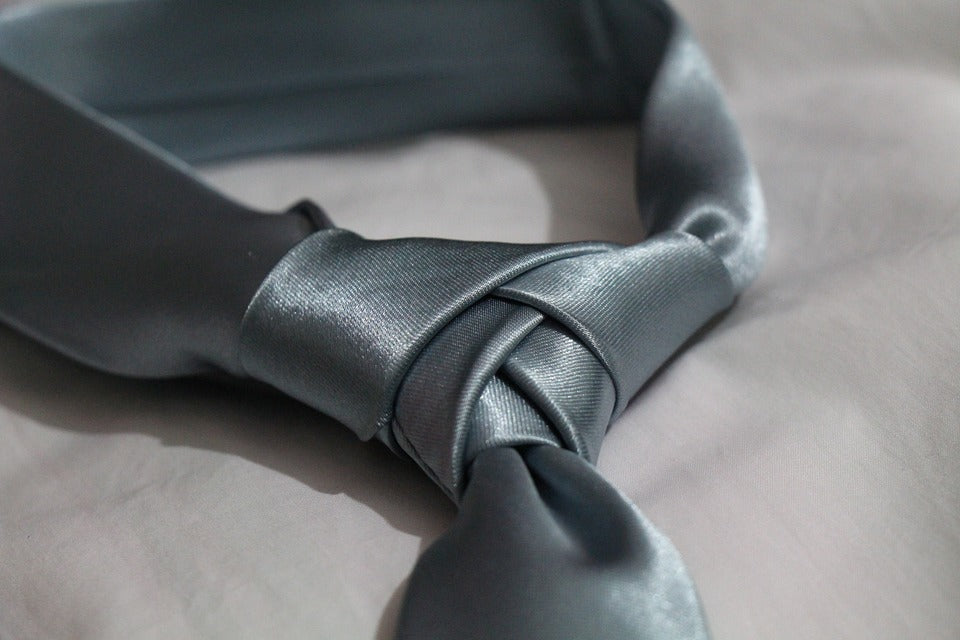Necktie
If there's one accessory that you don't want to skip, it's the necktie. A proper necktie will bring your outfit together in a cohesive manner, complimenting its existing colors while adding a stylish new touch to it in the process. Depending on the occasion during which you'll be wearing a suit, a necktie may actually be "required," in which case you must (or at least should) wear one. It's an otherwise simple accessory that play a major role in the appearance of your suit, so don't forget the necktie before stepping out the door.
Of course, there are several different ways to tie a necktie, some of which include the following:
- Four-in-hand knot
- Pratt knot
- Half-Windsor knot
- Windsor knot
- Small knot
- Nicky knot
- Atlantic knot
- Prince Albert knot
- Christensen knot
- Ediety knot
Tie Bar
What in the world is a tie bar? Also known as a tie clip, it's used to keep a necktie attached to the wearer's shirt. Tie bars are small, often consisting of just 2" piece of horizontal meta. Once clipped to your shirt, however, it will hold your necktie in place, preventing it from swinging around. Of course, not everyone needs to wear a tie bar. If you plan on sitting in front of a desk or table all day long, then a tie bar isn't going to offer any real benefit, as your necktie will most likely remain in place regardless of whether or not it secured to your shirt. On the other hand, if you plan on moving around, such as supervisors at a construction site, wearing a tie bar will offer a cleaner and more sophisticated look by holding your tie in place. And when your necktie is secured, it's not going create unsightly wrinkles from being tossed around in different directions. The bottom line is that you should accessorize your suit with a tie bar if you plan on staying active and/or being on your feet for long periods at a time.Pocket Squares
We can't talk about essential accessories for men's suits without mentioning the pocket square. A pocket square is essentially a small piece of fabric that's folded and placed inside the breast pocket of a suit jacket or coat. Some men may find them unnecessary, but they add a unique touch of style to a men's suit that's not found in other accessories or items. If you're interested in sporting a pocket square, pay close attention to the color. Ideally, you should choose a pocket square in a color that contrasts with the color of your suit jacket or coat. Wearing a black pocket square in a similar black-colored coat or jacket isn't going to work, as the two items will blend together (and not in a good way). However, opting for a white or even light blue-colored pocket square will create a more attractive and complete appearance by contrasting with the black jacket or coat. Following this basic rule will go a long ways in creating an attractive outfit with your suit.


